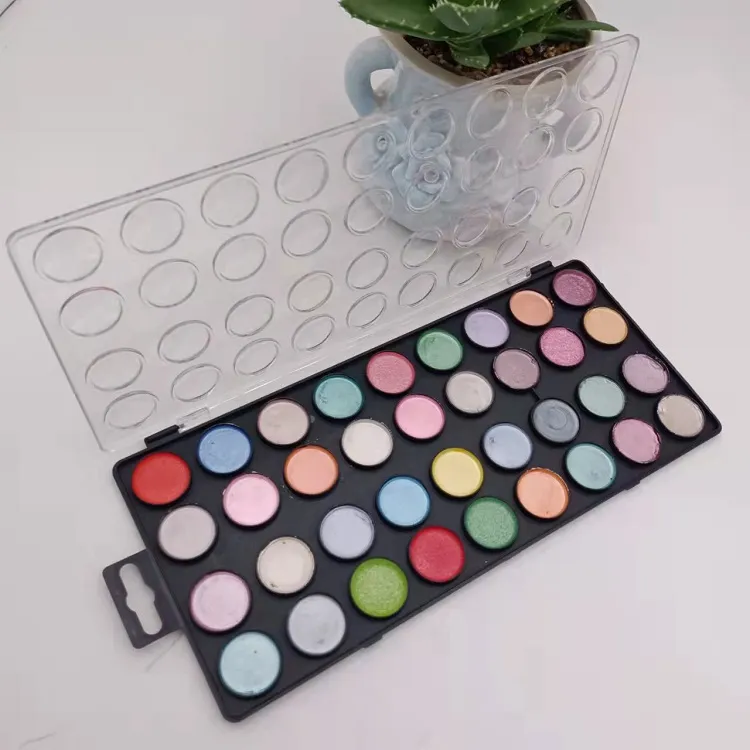- English
- Español
- Português
- русский
- Français
- 日本語
- Deutsch
- tiếng Việt
- Italiano
- Nederlands
- ภาษาไทย
- Polski
- 한국어
- Svenska
- magyar
- Malay
- বাংলা ভাষার
- Dansk
- Suomi
- हिन्दी
- Pilipino
- Türkçe
- Gaeilge
- العربية
- Indonesia
- Norsk
- تمل
- český
- ελληνικά
- український
- Javanese
- فارسی
- தமிழ்
- తెలుగు
- नेपाली
- Burmese
- български
- ລາວ
- Latine
- Қазақша
- Euskal
- Azərbaycan
- Slovenský jazyk
- Македонски
- Lietuvos
- Eesti Keel
- Română
- Slovenski
- मराठी
- Srpski језик
How do you use metallic watercolor paint?
2024-09-20
Using Metallic Watercolor Paint

Metallic watercolor paints offer a unique shimmer and shine that can add a touch of luxury to your artwork. Here's a basic guide on how to use them:
1. Choose the Right Surface:
Paper: Watercolor paper is the ideal choice due to its absorbent nature. However, other surfaces like canvas or cardstock can also work.
Surface Preparation: Ensure the surface is clean and free from any oils or contaminants.
2. Prepare Your Paints:
Wet or Dry: Metallic watercolors can be used wet or dry. Wet application creates a softer, more blended effect, while dry application results in a more intense, metallic look.
Mixing: If you want to create custom shades, you can mix metallic watercolors with other colors. However, keep in mind that the metallic sheen may be reduced.
3. Apply the Paint:
Wet-on-Wet: If you're going for a blended look, apply the metallic paint to a wet surface. The colors will bleed and create soft transitions.
Wet-on-Dry: For a more defined, metallic appearance, apply the paint to a dry surface. Use a dry brush to create texture and detail.
Layering: You can layer metallic paints to achieve a deeper, richer color and a more intense metallic effect.
4. Drying:
Allow to Dry: Let the paint dry completely before applying any additional layers or mediums.
5. Preserving the Metallic Finish:
Protective Coating: To protect the metallic finish and prevent fading, consider applying a fixative or a light coat of acrylic medium once the painting is dry.
Additional Tips:
Experiment: Don't be afraid to experiment with different techniques and color combinations.
Light: Metallic paints look best under natural light or artificial light with a warm tone.
Storage: Store your metallic watercolors in a cool, dry place to prevent them from drying out.
By following these guidelines, you can effectively incorporate metallic watercolor paints into your artwork and create stunning, shimmering pieces.




